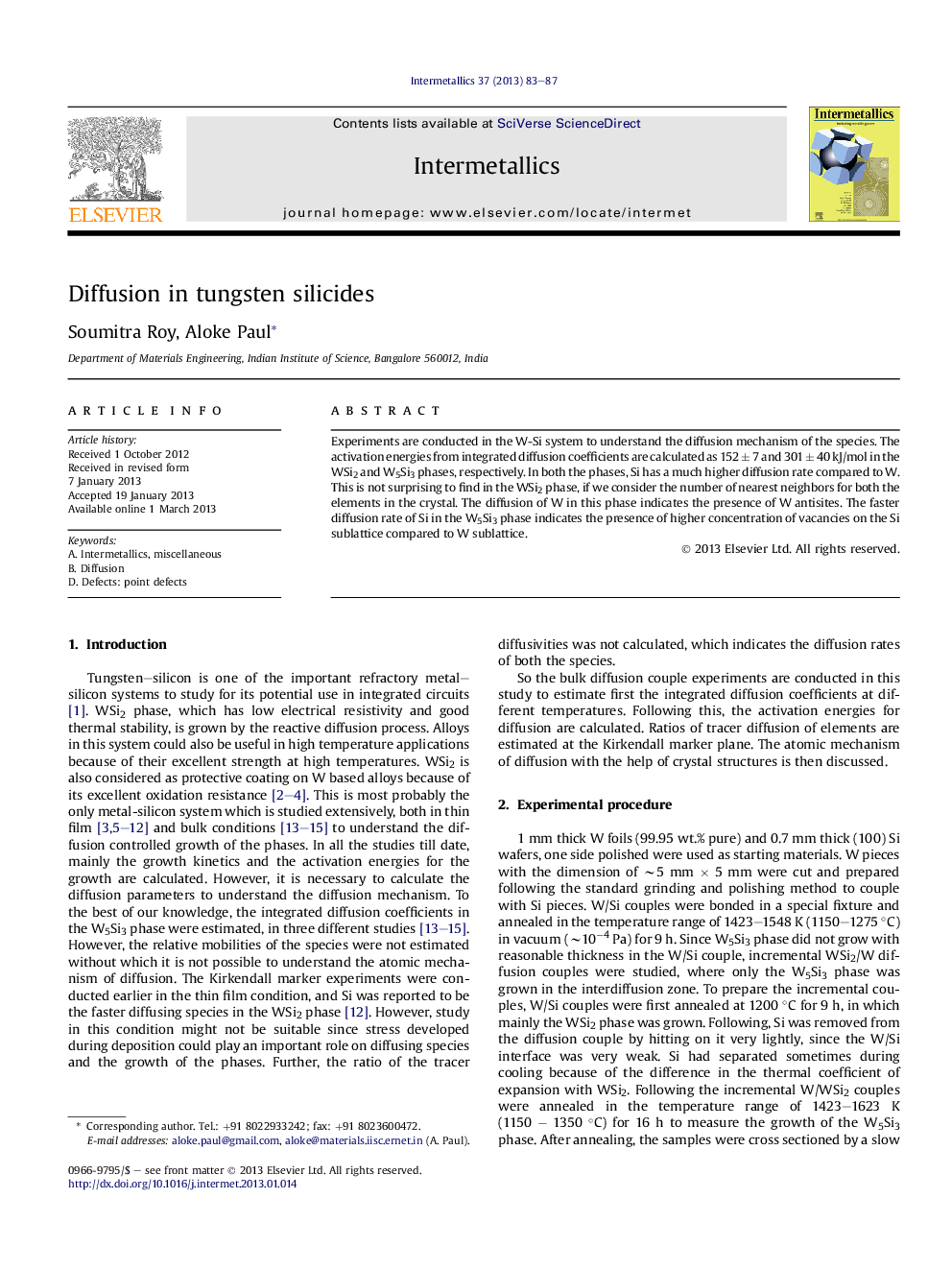| Article ID | Journal | Published Year | Pages | File Type |
|---|---|---|---|---|
| 1600310 | Intermetallics | 2013 | 5 Pages |
Experiments are conducted in the W-Si system to understand the diffusion mechanism of the species. The activation energies from integrated diffusion coefficients are calculated as 152 ± 7 and 301 ± 40 kJ/mol in the WSi2 and W5Si3 phases, respectively. In both the phases, Si has a much higher diffusion rate compared to W. This is not surprising to find in the WSi2 phase, if we consider the number of nearest neighbors for both the elements in the crystal. The diffusion of W in this phase indicates the presence of W antisites. The faster diffusion rate of Si in the W5Si3 phase indicates the presence of higher concentration of vacancies on the Si sublattice compared to W sublattice.
► Interdiffusion study in the W/Si system is conducted. ► Integrated diffusion coefficients and the ratio of tracer diffusion coefficients are calculated. ► Activation energies are calculated using the integrated diffusion coefficients calculated in the WSi2 and W5Si3 phases. ► Possible atomic mechanism of diffusion based on defects is discussed.
